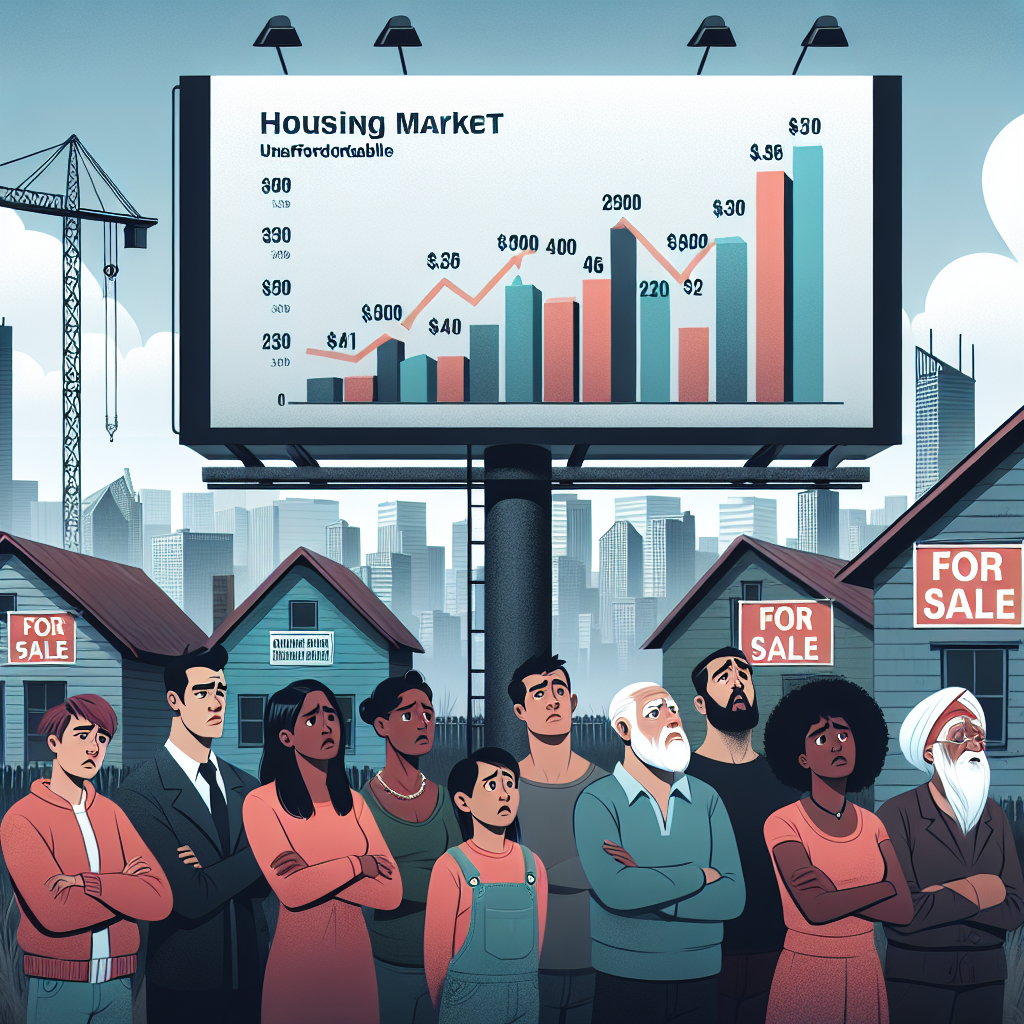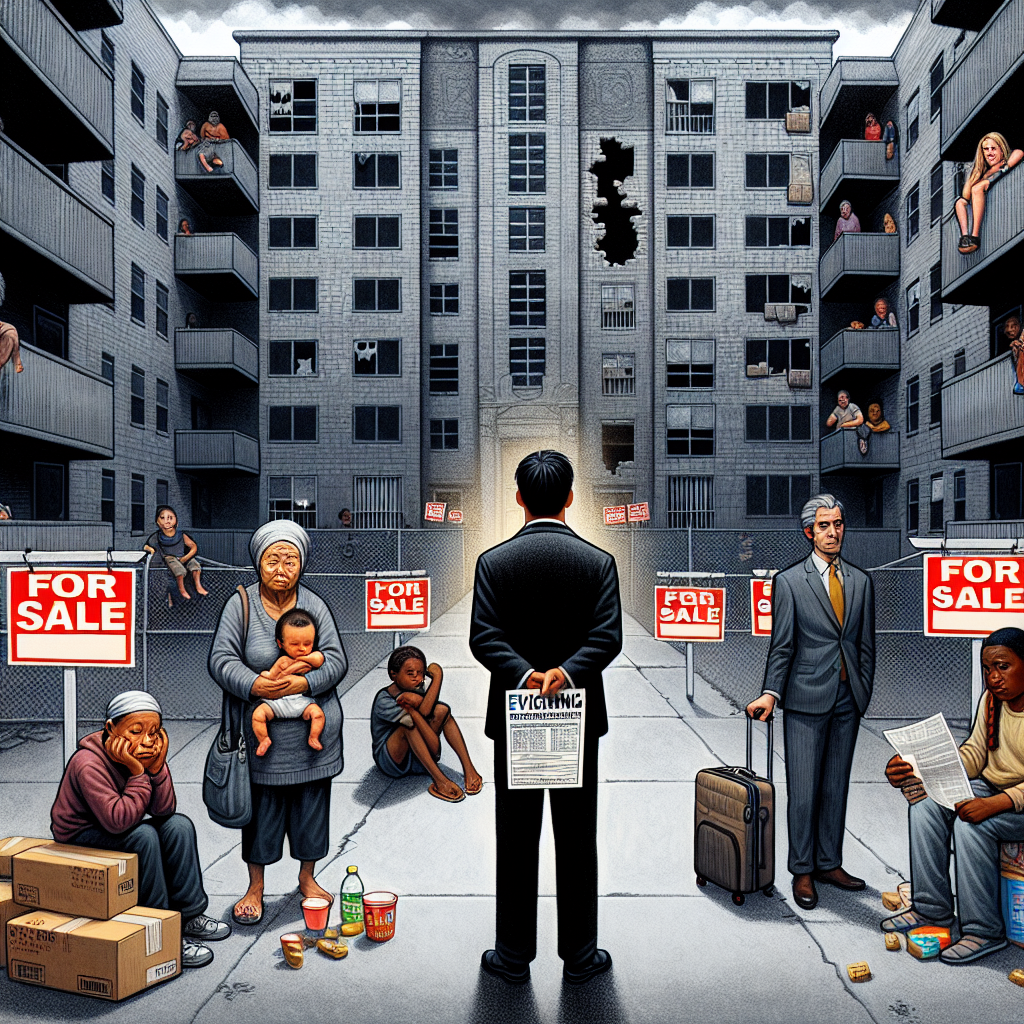-
Table of Contents
- The Current State of Housing Affordability: A Grim Reality
- Understanding Housing Affordability
- Key Factors Contributing to the Crisis
- The Impact of Housing Affordability on Society
- Economic Strain on Households
- Homelessness
- Social Inequality
- Impact on Mental Health
- Case Studies: Housing Affordability Around the World
- United States
- United Kingdom
- Australia
- Canada
- Potential Solutions to the Housing Affordability Crisis
- Increasing Housing Supply
- Rent Control and Tenant Protections
- Financial Assistance Programs
- Addressing Speculation and Investment
- Conclusion
The Current State of Housing Affordability: A Grim Reality

Housing affordability has become a pressing issue in many parts of the world, affecting millions of individuals and families. The dream of owning a home is increasingly out of reach for many, and even renting has become a significant financial burden. This article delves into the current state of housing affordability, examining the factors contributing to this crisis, its impact on society, and potential solutions.
Understanding Housing Affordability
Housing affordability refers to the ability of individuals or households to afford housing without compromising their ability to meet other essential needs. Traditionally, housing is considered affordable if it costs no more than 30% of a household’s gross income. However, this benchmark is increasingly difficult to meet for many people.
Key Factors Contributing to the Crisis
Several factors contribute to the current housing affordability crisis:
- Rising Property Prices: Property prices have skyrocketed in many urban areas, driven by high demand and limited supply.
- Stagnant Wages: While property prices have increased, wages have not kept pace, making it harder for people to afford housing.
- High Construction Costs: The cost of building new homes has risen due to increased material and labor costs.
- Speculation and Investment: Real estate has become a popular investment vehicle, driving up prices and reducing the availability of affordable housing.
- Regulatory Constraints: Zoning laws and other regulations can limit the supply of new housing, exacerbating the affordability issue.
The Impact of Housing Affordability on Society
The lack of affordable housing has far-reaching consequences for individuals and society as a whole. Here are some of the key impacts:
Economic Strain on Households
When housing costs consume a significant portion of a household’s income, it leaves less money for other essential needs such as food, healthcare, and education. This financial strain can lead to increased debt and reduced quality of life.
Homelessness
The most extreme consequence of the housing affordability crisis is homelessness. When people cannot afford housing, they may be forced to live in shelters, on the streets, or in substandard conditions. Homelessness has severe implications for physical and mental health, as well as social stability.
Social Inequality
The housing affordability crisis exacerbates social inequality. Low-income families and marginalized communities are disproportionately affected, leading to increased segregation and reduced social mobility.
Impact on Mental Health
The stress and anxiety associated with housing insecurity can have a significant impact on mental health. Studies have shown that individuals facing housing instability are more likely to experience depression, anxiety, and other mental health issues.
Case Studies: Housing Affordability Around the World
To understand the global nature of the housing affordability crisis, let’s examine some case studies from different parts of the world.
United States
In the United States, housing affordability is a major issue in many cities. According to the National Low Income Housing Coalition, there is a shortage of 7 million affordable and available rental homes for extremely low-income renters. Cities like San Francisco, New York, and Los Angeles have some of the highest housing costs in the country, making it difficult for many residents to find affordable housing.
United Kingdom
The UK is also grappling with a housing affordability crisis. A report by Shelter, a housing and homelessness charity, found that 1 in 3 working families could not afford to pay their rent or mortgage for more than a month if they lost their job. London, in particular, has seen a significant increase in property prices, making it one of the most expensive cities in the world to live in.
Australia
Australia’s housing market has experienced rapid price growth, particularly in cities like Sydney and Melbourne. According to the Australian Bureau of Statistics, the median house price in Sydney is over AUD 1 million, making it one of the least affordable cities globally. The high cost of housing has led to increased financial stress for many Australians.
Canada
Canada is facing a similar housing affordability crisis, with cities like Vancouver and Toronto experiencing significant price increases. The Canada Mortgage and Housing Corporation (CMHC) reports that nearly 1 in 5 Canadian households spend more than 30% of their income on housing. The high cost of housing is a major concern for many Canadians, particularly young people and first-time homebuyers.
Potential Solutions to the Housing Affordability Crisis
Addressing the housing affordability crisis requires a multifaceted approach. Here are some potential solutions:
Increasing Housing Supply
One of the most effective ways to address housing affordability is to increase the supply of affordable housing. This can be achieved through:
- Incentives for Developers: Governments can provide incentives for developers to build affordable housing, such as tax breaks or subsidies.
- Relaxing Zoning Laws: Easing zoning restrictions can allow for higher-density housing and more diverse housing options.
- Public Housing Projects: Governments can invest in public housing projects to provide affordable housing for low-income families.
Rent Control and Tenant Protections
Implementing rent control measures and strengthening tenant protections can help ensure that rental housing remains affordable and that tenants are not unfairly evicted or subjected to excessive rent increases.
Financial Assistance Programs
Providing financial assistance to low-income households can help them afford housing. This can include:
- Housing Vouchers: Vouchers can help low-income families cover the cost of rent in the private market.
- Down Payment Assistance: Programs that provide assistance with down payments can help first-time homebuyers enter the housing market.
Addressing Speculation and Investment
Regulating real estate speculation and investment can help reduce the upward pressure on housing prices. This can include measures such as:
- Foreign Buyer Taxes: Implementing taxes on foreign buyers can help reduce speculative investment in the housing market.
- Vacancy Taxes: Taxes on vacant properties can encourage owners to rent or sell their properties, increasing the supply of available housing.
Conclusion
The current state of housing affordability is a grim reality for many individuals and families around the world. Rising property prices, stagnant wages, high construction costs, and regulatory constraints have all contributed to the crisis. The impact of housing affordability extends beyond financial strain, affecting mental health, social inequality, and even leading to homelessness.
Addressing this crisis requires a comprehensive approach that includes increasing the supply of affordable housing, implementing rent control measures, providing financial assistance to low-income households, and regulating real estate speculation. By taking these steps, we can work towards a future where everyone has access to safe, affordable housing.
In summary, the housing affordability crisis is a complex issue that requires urgent attention and action. By understanding the factors contributing to the crisis and exploring potential solutions, we can begin to address this pressing issue and improve the quality of life for millions of people worldwide.








